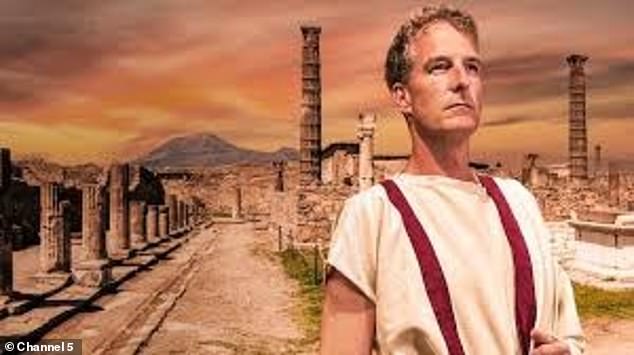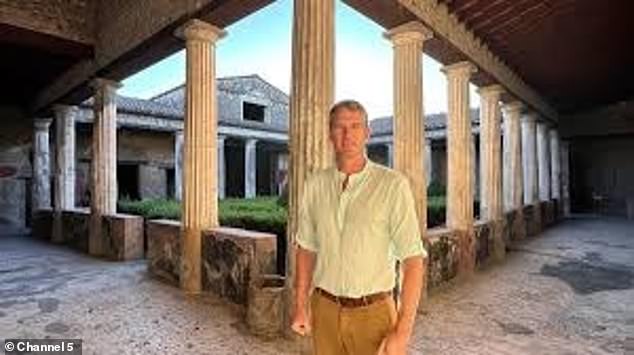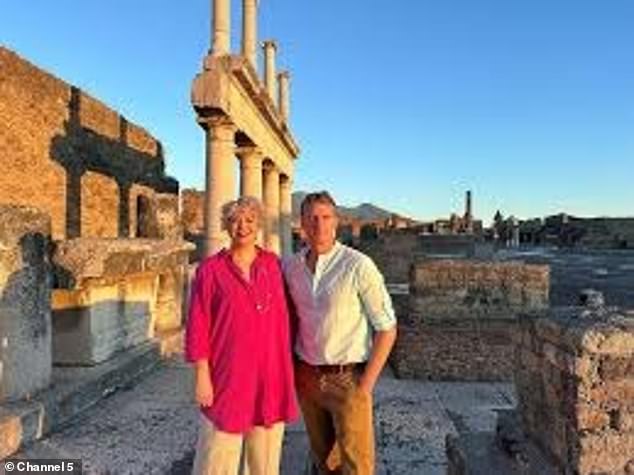A strong whiff of AI hung over Pompeii: Life In The City, as Dan Snow bounded enthusiastically around the ruins near Naples.
Animated scenes, apparently created with computer generated images, superimposed ghostly Roman figures against the ancient backdrop.
Dan and his fellow presenter Kate Lister took a novel approach to this jaunty history documentary, by concentrating on how the town of 20,000 inhabitants lived rather than died. There were no plaster casts and almost no references to the volcanic explosion of 79AD that buried Pompeii under ash for nearly two millennia.
But the reconstructed elements were a real distraction. It’s usual on history shows to include shots of extras in costume, silently acting out key scenes. The computer graphics that replaced them were two-dimensional and unconvincing, bad enough to keep me from absorbing Dan’s boisterous explanations.
A slave and a donkey trundled around a millstone, grinding flour for bread. Two wealthy brothers, former slaves themselves, gazed blankly across the atrium of their luxurious villa. An expressionless woman stood in the doorway of a brothel.
These clips were played repeatedly, and each time I thought, ‘That looks weird. Why not use human extras?’
For many actors, jobs as extras are a lifeline — a way of making contacts as well as money, and perhaps earning an Equity card. Supplanting people with AI is a bad idea for everyone.
This ought to be obvious. And yet, the BBC is embracing AI with gusto. Its online news service now employs Artificial Intelligence to generate summaries of long stories, according to Rhodri Talfan Davies, who is ‘BBC Executive Sponsor of Gen AI’. That sounds like a title stolen from the sitcom W1A but I promise it’s real.

Animated scenes, apparently created with computer generated images, superimposed ghostly Roman figures against the ancient backdrop

Dan and his fellow presenter Kate Lister took a novel approach to this jaunty history documentary

The computer graphics that replaced them were two-dimensional and unconvincing, bad enough to keep me from absorbing Dan’s boisterous explanations
If the Beeb is willing to auto-create news copy with computers, how long until they replace the scriptwriters, too? AI could probably churn out inane patter for celebrity quiz shows and the commentary for sports events.
Would we even notice the difference? Thankfully, on the evidence of this Pompeii documentary, I believe we would. The non- human extras were unrealistic enough to be subtly creepy.
Despite the AI distractions, we did learn that Romans rarely got a full night’s sleep. Archaeologist Dr Hannah Platts explained they went to bed at nightfall, but got up in the small hours to carry out chores by candlelight. Then they tucked in for a second kip till dawn.
That sounds a hideous idea, a sort of mass insomnia. To make it even more exhausting, their working week was nine days long. On the other hand, they had about 100 days off each year, probably to catch up on their sleep.
We were also told that Roman laundries used human urine to bleach togas. This was such a lucrative business that the Emperor Vespasian slapped a tax on wee.
Don’t tell Chancellor Rachel Reeves. She’s already taking the proverbial.










